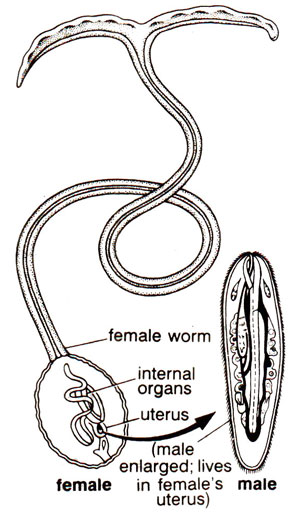Genetics / Sex Determination, Sex Differentiation, Dosage Compensation and Genetic Imprinting
Haploid males in Hymenoptera

Fig. 17.22. A female and a male insect Bonellia, showing that the male lives in the uterus of the female.
In the insect order Hymenoptera, which includes ants, bees, wasps and sawflies, etc., male individuals arise parthenogenetically (without fertilization) and, therefore, have a haploid chromosome number. For instance, in honeybee, drones (males) have 16 chromosomes, while queen bee and workers have 32 chromosomes. In such cases, determination of sex is governed by haploid and diploid chromosome constitution.

Fig. 17.22. A female and a male insect Bonellia, showing that the male lives in the uterus of the female.
Support our developers

More in this section

